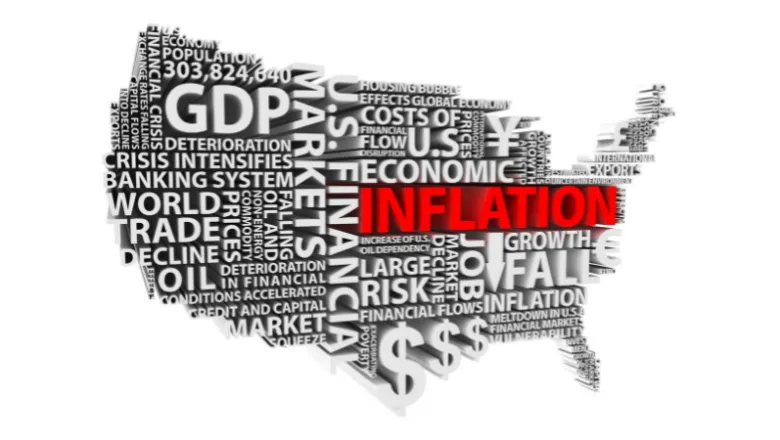Tips on Managing Inflation

Financial Literacy
COVID, supply chain disruptions, murder hornets, Ukraine, monkeypox, and higher inflation rates - isn’t it interesting to manage your finances in 2022?! When you read the news, you’ll see a lot of vastly differing opinions on what is going to happen with the US economy. I don’t have any answers on what is going to happen, but I’d like to address a question that I keep getting from farmers and business owners – how can I plan my cash flow in these inflationary times?
My first piece of advice is to develop a projected cash flow budget. This will help you estimate your cash inflows and cash outflows over the next year. It will force you to think about what you will be doing in your operation, what inputs you will need, what they will cost, and when you will need to purchase them. It will also force you to estimate how much production (tons, bushels, cwts, etc.) you will have, what price you expect to receive, and when you plan to receive that money.
- READ MORE: Recording Keeping
Now, I know what you’re thinking – with all this uncertainty how can I even start to build such a thing? Start with making your best guesses. Look at market outlook reports and futures markets to see what “the experts” think will happen to prices and costs. Adjust those projected values to your local market. Start with your best guess.
Next, do some sensitivity analysis to see how your cash flow will be impacted by 10-25% changes in your prices and costs. Spreadsheets are a great way to do this. I have a basic cash flow statement you can use. Download it HERE. Use it to increase the cost of your inputs and see how your cash flow will be affected. Use it to determine possible ways you can lower your costs without hurting your production or quality. Use it to determine how much of an operating line of credit to request. You may not know exactly what these prices will be, but sensitivity analysis should help you feel more comfortable in your planning.
Another useful tool is to calculate your breakevens. What is the maximum you can afford to pay for an input, holding everything else constant, and still be able to cover your cash flow needs? What is the lowest output price you can obtain and still meet your cash flow needs? Combined with sensitivity analysis, breakevens can give you an acceptable range of prices that you can handle and still be able to pay your expenses.
Once you have taken your best shot at a cash flow budget and some basic sensitivity analysis, arrange a meeting with your lender. Use your analysis to discuss changes in your operating line of credit or term debt structure to ease the pressure on your cash flow.
There are several other strategies or tools that you can use to manage your cash flow during this inflationary period. Here’s a short list of some options:
- Bulk purchases of storable goods – Purchase storable goods now before inflation drives the price up further. Of course, you need to consider your ability to store these goods until you use them, as well as your ability to handle a large cash outflow right now. Here’s another good use of the cash flow budget.
- Implement a hedging program to put a ceiling on your input costs – Determine how much of your inputs you will need. Then use futures contracts and/or options to limit increases in your input costs for commodities, fuel, or electricity. Learn more about futures and options.
- Use a procurement service – Hire a firm that specializes in procuring your inputs. You can work with them to develop a purchasing strategy for your operation, or you can hire them to make the purchases for you.
- Identify ways to improve the efficiency of your inputs – Find methods of reducing your input needs without hurting your production. Soil test to use the appropriate level of nutrients; forage test to be sure your livestock are getting the necessary amount of nutrients they need; take actions to reduce storage losses and shrink; calibrate and adjust your machinery; and so on….
- Consider using alternative inputs – Can you substitute one input for a less expensive input without impacting production levels? Be sure to compare the inputs on a $/component basis to identify which is actually the least expensive option. However, consider all of the trade-offs you will be making if you substitute one input for another.
- Develop an enterprise accounting recordkeeping system for your farm or business - Look at the profitability of each aspect of your farm or business to see where you are making money and where you are losing money. You might find out that you can improve your profitability by reducing or eliminating certain aspects of your farm. For example, you might find that you can purchase hay at a lower cost than you can produce hay of a similar quality. Enterprise accounting will enable you to determine your cost of production. It will also help you calculate more accurate breakevens!
LEARN MORE: What is the difference between ACCRUAL and ENTERPRISE Accounting?
My gut tells me that these higher levels of inflation might stick around for at least one more year. Regardless, a more proactive strategy of managing your cash flow can only help you. Build a projected cash flow budget. Analyze how sensitive your farm is to changes in the costs of key inputs. Estimate your breakevens. And look at all of your options for reducing the pressure on your cash flow.
- RESOURCE: Request a free digital copy of the Farm Credit Farm Record Book.
- ACCESS MORE: Farm Management Resources
Author
Dr. Alex White
Virginia Tech Dairy Science